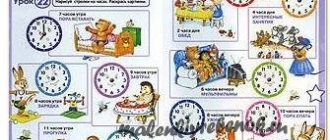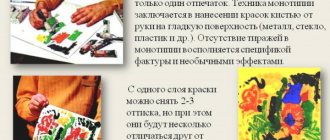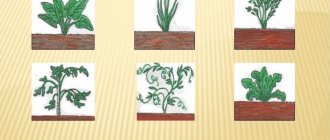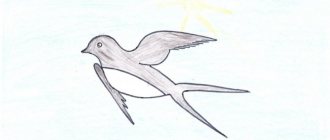Drawing lesson “Flowers for Mommy”
- January 24, 2013
Competition “My Pedagogical Initiative - 2012”
Nomination “Methodological work in preschool educational institutions”
Group: second youngest.
Educational field: "Artistic creativity."
GCD type: combined.
Goal: to familiarize children with non-traditional drawing techniques (tamponing).
Tasks:
1. Educational:
- Fine: learn to convey the image of a flower, structure and shape using non-traditional drawing techniques - printing with a paper ball and finger painting.
- Technical: master the technique of performing work using the padding method and finger painting.
- Compositional: improve compositional skills in arranging an object in the center of the sheet.
- Color: teach to use color as an artistic means of expression; consolidate knowledge of yellow and green colors.
2. Developmental: develop creative imagination, memory, speech, small muscles of the hands.
3. Educational: to cultivate neatness, aesthetic taste, to cultivate interest in actions with paper, paint, love and care for the closest person - mother, the ability to complete a task;
Didactic tools:
- Demonstration: a picture of a flower.
- Handouts: sheets of paper for drawing, sheets of paper for making balls, plates with yellow and green gouache, tray, napkins.
Connection of GCD with other educational areas: “Cognition”, “Communication”.
1. Organizational moment.
Guys, please come to me. Let's play. Finger gymnastics:
Our hands are like flowers, Our fingers are like petals. The sun wakes up - the flowers open. In the dark they will sleep very soundly again.
2. Motivational- target stage.
A wonderful time of year is coming - spring. Nature is waking up from a long sleep: the sun is shining warmer, the snow is melting, the first flowers are appearing in thawed patches! (Show a picture of a flower).
The spring holiday of mothers is coming soon - March 8th. Do your mothers love flowers? Let's give your mothers a gift, draw flowers.
3. Perception of the subject.
Look what a beautiful flower. What colour is he? Here is the leg on which it stands. What is it called? What colour is he? What's on the stem? What color are they?
4. Explanation of work methods.
4.1. A detailed demonstration of how to do it: we will draw a flower with a paper ball, for this I will take a sheet of paper, crumple it and roll it between my palms. It turned out to be a ball. I dip the ball in yellow paint and apply it to the top of the sheet, putting the ball into the tray. The result was a yellow flower. Then I dip my finger in green paint and draw a long straight line from top to bottom of the flower. The result is a stem. Again I dip my finger in green paint and draw short lines upward from the side of the stem. These are leaves. I wipe my finger with a napkin. Look what a beautiful flower I made. Guys, come to me and we'll play.
4.2. Phys. minute “Flowers grow in the meadow”:
Flowers of unprecedented beauty grow in the meadow. (Stretching - arms to the sides) Flowers are reaching towards the sun. Stretch with them too. (Stretching - hands up) The wind blows sometimes, But it’s not a problem. (Waving hands) The flowers bend down and lower their petals. (Bends over) And then they get up again And still bloom.
4.3. Questions for clarification. Now take a seat at the tables. Let's repeat what will we draw first? What color will we paint the flower? What will we draw then? What color will we use to paint the stem and leaves?
5. Practical work.
5.1. Finger gymnastics.
Let's draw a beautiful flower together. First you need to prepare a ball of compressed drawing paper. Take 1 sheet of paper. We crush it with our hands and roll it between our palms.
We squeeze a sheet of paper and knead our palms. We try, we roll together, we turn it into a ball. Let's not let him get bored, We will draw for him.
Well done, you've made a paper ball.
5.2. Corrective and individual work. You can draw a flower. I monitor and help children who have difficulties. Let me remind you that we start drawing the flower at the top of the leaf.
5.3. Analysis of children's works. How great you did it. Guys, bring all your flowers to the first table. What did we draw? And for whom? Look how beautiful they turned out.
6. Summing up. Well done, you did a good job! It turned out to be a beautiful gift for mom. In the evening, when mothers come for you, give them your flower. Your moms will love it.
Making paper balls
Productive activity
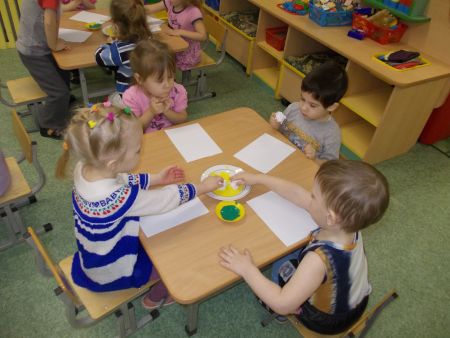
Summarizing
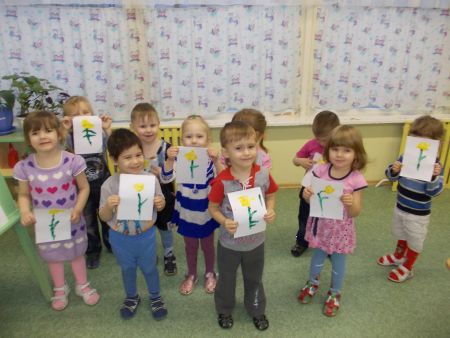
Bibliography:
- G. I. Davydova “Non-traditional drawing techniques in kindergarten”, Moscow, “Scriptorium Publishing House 2003”, 2008
- Basic general education program of preschool education From birth to school. Ed. N. E. Veraksy, T. S. Komarova, M. A. Vasilyeva. - M.: MOSAIC-SYNTHESIS, 2010.
Author: Natalya Andreevna Terentyeva, teacher of the MKDOU “Kindergarten of a combined type No. 27” of the Asbestovsky urban district. 2 years of teaching experience.
MAGAZINE Preschooler.RF
Author: Litovkina Olga Nikolaevna, teacher of kindergarten No. 17 in Alekseevka, Belgorod region Goal: • teach children a new drawing technique - using food coloring, continue to teach the technique of monotype; create conditions for creative activity through the use of the principle of synesthesia (music, sounds of nature, aromatherapy), creating a game situation; fix the names of meadow and garden flowers; • develop creative imagination by guessing the image of meadow and garden flowers in color spots, promote the development of coherent speech in preschoolers; • cultivate emotional responsiveness to the beauty of the surrounding nature. Preliminary work: looking at reproductions of paintings depicting a blooming meadow, looking at postcards, photographs depicting garden and meadow flowers, talking about flowers, reading the story by K. Paustovsky “The Golden Meadow”. Materials and equipment: food dyes, watercolor paints, palettes, napkins, brushes large and small, A3 paper, sponges, jars of water, wet wipes, aroma lamp, lavender oil, bags and jars with dried herbs, magic wand, letter from a gnome , tape recorder, audio recording with music and sounds of nature. Move. 1. Organizational and surprise moment. The group one is designed like a clearing, but without flowers. A path of colored “stones” leads to the clearing. — Guys, look what a beautiful path we have in our group. Want to know where it leads? Then let's follow it. Children walk one after another along the path. They sit on a clearing rug. - Guys, where are we? That's right, this is a clearing. See what's growing here? Children find dried meadow herbs and smell them. - This is thyme, and this is lemon balm, mint, chamomile. Smell them. - What else should grow in the clearing? The children answer that flowers should grow in the clearing. -Where did they disappear to? Look, a gnome (large toy) has come to us. He is holding something in his hands. This is some kind of letter. Perhaps this letter is for us. Let's read it. The guys agree, and we read the letter: “Dear guys, many beautiful flowers used to grow in our meadow: lilies of the valley, daisies, dandelions, roses, cornflowers, bells. But one day, an evil witch bewitched all the flowers and they disappeared. In order for the flowers to appear again, you need to solve riddles. Help us please". The children agree to help, and I tell them riddles about flowers. Hey, bells, blue, with a tongue, but no bells! (Bells)The white cups look at the grass, smell fragrant, and stand on a stem. (Lilies of the valley)
Little sisters are standing in the field - yellow eyes, white eyelashes. (Chamomile)
The blue stars are burning in the field, They strive to jump right out of the rye. (Cornflowers)
The red princess grows in our garden, and she only drinks pure water. (Rose)
A ball grew on a green fragile leg near the path, a breeze rustled and scattered this ball. (Dandelion)
- What great fellows you are! We managed to solve all the riddles. But look around... Has anything changed? Have flowers appeared? The children conclude that the flowers never appeared. - Guys, look what else I found in the clearing? The children answer that the found object looks like a magic wand. - How did you know that she was magical? (Because she's beautiful). - By touching me with my magic wand, I can turn you into flowers. You, Tanya, will be a daisy! I will turn you, Nikita, into a dandelion, etc. Children depict flowers. — We have wonderful flowers! Guys, but I feel sorry for leaving you with flowers, so I’m turning you back into boys and girls. Let's think about how we can return flowers to the meadow with our own hands? Children offer various options. I lead the children to the idea that we can draw flowers.
2. Show the image method.
— First, let’s light a magic aroma lamp so that our group will be filled with the smells of flowers. And now I will teach you how to draw magic flowers. I take a piece of paper. I fold it in half. Then, using a sponge, I wet the sheet with water. With a thick brush, I paint half the sheet with colored spots of cheerful colors (I ask the children what colors they are). Then, until the sheet is dry, I scatter magic paints (food coloring). See how beautifully the dyes spread on a damp sheet, like stars. Now I fold the sheet in half. We count to three. I'm unfolding it. You get beautiful colored spots. Now this spot needs to be disenchanted. Think about what this blue spot looks like (like a cornflower, a bell). Draw a stem and leaves for it. Here is one flower that has already been disenchanted. Disenchant the rest of the flowers in the same way. Let the magic begin. And so that inspiration comes to you quickly, I will turn on music with the sounds of nature. Imagine that you are in a real summer meadow, the sun is shining, birds are singing, insects are buzzing... And while you are drawing, you can come up with some kind of fairy tale or story about your flowers.
3. Independent activity of children. Children draw on their own. If the child is at a loss, I pay attention to the similarity of a particular spot with a flower. I encourage timid children and praise them so that the children do not have the fear of failure in working with new visual material. After the children apply the food coloring and while it is drying, a physical education session is held.
The wind sways the butterflies, tilts them left and right. Once they bent down, twice they bent down, and they landed on the flowers. (2 times)
4. Analysis of children's works. - Guys, I see that you have already cast a spell on all the flowers. Now take them quickly to the clearing. Let us admire them. What colors did you use to paint? Tell us about your drawings. Who wants to tell a fairy tale about their flowers? (Children do self-analysis of their work). Did you like drawing this way? - You are so great, you managed to dispel the spell of the evil sorceress! Look what a beautiful clearing we have turned out to be, probably even more beautiful than it was before. There are bells, cornflowers, daisies, dandelions, and roses. In gratitude, the gnome has prepared gifts for you - these are such beautiful bags. Guess what's in them? To do this you need to touch and smell them. The children answer that the bags contain dry grass. - Yes, guys, these are dry medicinal herbs and flowers. Now you can enjoy the smell of a blooming meadow all year round.
| Next > |


